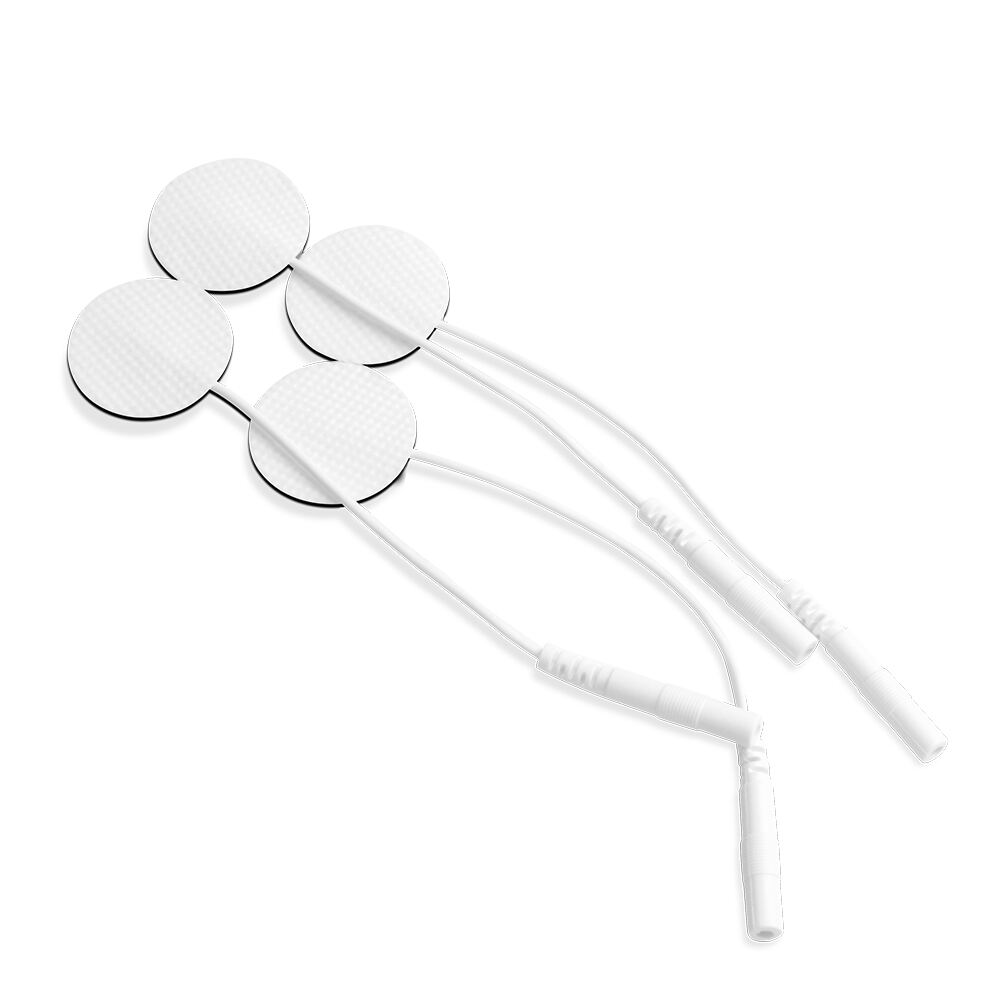TENS (Transcutaneous Electrical Nerve Stimulation) therapy has become increasingly popular for managing various types of pain at home. These portable devices offer drug-free pain relief, but many users don't realize that proper usage is crucial for both safety and effectiveness. Whether you're new to TENS therapy or looking to optimize your current routine, this comprehensive guide will walk you through everything you need to know about using your TENS unit safely and effectively in the comfort of your home.
Understanding TENS Therapy: How It Works
Before diving into usage guidelines, it's helpful to understand what TENS therapy does. The device sends mild electrical currents through electrodes placed on your skin. These currents work through two primary mechanisms:
Gate Control Theory: The electrical impulses compete with pain signals traveling to your brain, essentially "closing the gate" on pain perception
Endorphin Release: Some settings can stimulate your body's natural painkillers, providing longer-lasting relief
Unlike medications, TENS works locally and doesn't build up in your system, making it generally safe for regular use when proper guidelines are followed.
Getting Started: Your Pre-Use Safety Checklist
1. Consult Your Healthcare Provider
Before using any TENS unit, especially if you have underlying health conditions, consult with your doctor or physical therapist. This is particularly important if you have:
A pacemaker or other implanted electronic devices
Epilepsy
Cancer or recent history of cancer
Pregnancy (especially first trimester)
Deep vein thrombosis
Heart problems
Skin conditions or sensitivities in the treatment area
2. Choose the Right Equipment
Device Quality: Invest in a TENS unit from a reputable manufacturer
Electrode Selection: Use electrodes specifically designed for your device
Fresh Supplies: Ensure electrodes are not expired and have good adhesion
3. Understand Your Device
Read the manufacturer's instructions thoroughly
Familiarize yourself with all controls and settings
Practice basic operations before your first actual treatment
Step-by-Step Guide to Proper TENS Application
Step 1: Prepare Your Skin
Cleanliness: Wash the treatment area with soap and water and dry thoroughly
Hair Removal: If necessary, clip hair (don't shave immediately before use to avoid irritation)
Skin Inspection: Check for cuts, rashes, or irritation - avoid these areas
Product-Free: Ensure no lotions, oils, or creams are on the skin
Step 2: Correct Electrode Placement
This is perhaps the most crucial aspect of effective TENS therapy:
General Placement Principles:
Place electrodes on either side of the painful area
Position them at least 1 inch apart
Follow pain referral patterns when applicable
Avoid placing electrodes directly on bones or joints
Specific Placement Guidelines:
Lower Back Pain: Place electrodes parallel to your spine, 2-3 inches apart
Neck and Shoulders: Position on muscle bulk, avoiding the front of the neck
Knees: Place above and below the knee joint, not directly on the kneecap
Hands/Wrists: Position on the forearm muscles rather than directly on joints
Step 3: Device Setup and Settings
Start Low: Begin with all settings at their lowest levels
Power On: Turn on the device only after electrodes are properly placed
Gradual Increase: Slowly increase intensity until you feel a strong but comfortable tingling sensation
Avoid Overstimulation: Never increase intensity to the point of pain or muscle twitching
Recommended Initial Settings:
Frequency: 80-100 Hz (for acute pain)
Pulse Width: 100-200 microseconds
Mode: Continuous (for beginners)
Advanced Usage Tips for Optimal Results
1. Timing and Duration
Session Length: 15-30 minutes per session
Frequency: 1-3 times daily as needed
Tolerance Prevention: Avoid using continuously for more than 60 minutes in one area
Consistency: Regular use typically provides better results than sporadic use
2. Cycling and Mode Selection
-
Pulse Rate Variations:
High frequency (80-150 Hz): For acute, sharp pain
Low frequency (2-10 Hz): For chronic pain and endorphin release
Modulation mode: Prevents nerve adaptation
Burst Mode: For deep, aching pain
Modulation Settings: Helps prevent tolerance build-up
3. Combining with Other Therapies
Use before stretching or gentle exercise
Apply after heat therapy for enhanced relaxation
Coordinate with medication schedules (under medical guidance)
Incorporate with relaxation techniques like deep breathing
Common Mistakes to Avoid
1. Placement Errors
Placing electrodes on numb areas
Positioning over broken or irritated skin
Using on the front of the neck or over the eyes
Placing directly on joints rather than surrounding muscles
2. Usage Mistakes
Starting with intensity too high
Using for too long in one session
Expecting immediate, permanent results
Neglecting skin care between sessions
3. Maintenance Oversights
Reusing old or dried-out electrodes
Failing to clean the device properly
Storing electrodes improperly
Ignoring device error messages
Troubleshooting Common Issues
Problem: No Sensation
Check electrode connection and placement
Ensure good skin contact
Verify device is charged/working
Check that intensity is turned up
Problem: Sharp or Burning Sensation
Reduce intensity immediately
Check for poor electrode contact
Look for skin irritation or broken skin
Ensure electrodes aren't overlapping
Problem: Skin Irritation
Clean skin thoroughly before application
Try hypoallergenic electrodes
Rotate placement sites regularly
Allow skin to breathe between sessions
Special Considerations for Specific Populations
For Elderly Users:
Check skin more frequently for sensitivity
Use lower intensity settings
Consider shorter session times
Ensure proper hydration
For Sensitive Skin:
Use hypoallergenic electrodes
Limit session duration
Clean skin immediately after use
Consider barrier creams (applied well before session)
During Pregnancy:
Use only under medical supervision
Avoid abdominal and low back placement
Use lowest effective settings
Limit session frequency
Maintaining Your Equipment
Electrode Care:
Clean with water after each use (if reusable)
Store in sealed container
Replace when adhesion decreases
Typical lifespan: 15-30 uses
Device Maintenance:
Keep dry and clean
Store at room temperature
Protect from impact
Check wires regularly for damage
When to Seek Professional Help
While TENS units are generally safe for home use, consult your healthcare provider if you experience:
Persistent skin irritation
Increased pain or discomfort
Muscle twitching that continues after treatment
Numbness or tingling that persists
No improvement after 2-3 weeks of regular use
Creating Your Personalized TENS Routine
Developing an Effective Schedule:
Morning: 20 minutes to address morning stiffness
Afternoon: 15-30 minutes for activity-related pain
Evening: 20 minutes to relieve day's accumulation
Tracking Your Progress:
Keep a simple pain diary
Note settings that work best
Track duration of pain relief
Monitor any side effects
The Bottom Line: Safety First, Results Follow
TENS therapy can be an excellent addition to your pain management toolkit when used correctly. Remember these key principles:
Start Conservatively: Low settings, short durations
Listen to Your Body: Discomfort means adjust or stop
Be Patient: Benefits often build over time
Stay Consistent: Regular use typically works best
Know Your Limits: When in doubt, consult a professional
By following these comprehensive guidelines, you can maximize the benefits of your TENS unit while minimizing risks. Proper home use requires attention to detail and patience, but the reward of effective, drug-free pain relief makes the effort worthwhile.





